Matador Network's Blog, page 1006
September 25, 2019
US Disney parks add 400 vegan dishes

All you Mickey Mouse enthusiasts on a plant-based diet can now rejoice: Disney has finally decided to embrace veganism. Disney Parks recently pledged to add vegan options to all of its dining options, from sit-down restaurants to food stalls.
With cream-cheese filled churros and turkey legs among the most iconic Disney dishes, vegans found it difficult to navigate the parks’ dining options. But now all herbivores can take part in the joy of Disney with at least a little more ease. By spring 2020, 400 vegan dishes will land at both Disney World and Disneyland. It’s an impressive feat given that there are a combined 602 places to grab a bite, many of which highlight a global cuisine, from Cajun and Italian food to churros and cupcakes.
Vegan options you can expect to see at Disney’s US theme parks include steamed dumplings at Le Cellier, the steakhouse at Epcot, “Tatooine Two Suns Hummus” at Hollywood Studios, and well-fried tofu seasoned with chilis and “eggless florentine,” according to CNN. Diners can find the new dishes by looking for a green leaf logo on the menu.
Disney is also adding vegan options to menus at all 36 of the brand’s hotels in Orlando, as well as the three hotels in Anaheim. Dishes will include carrot gnocchi and cauliflower tacos.
Though Disney is reluctant to call these meals vegan, instead opting for the term “plant-based,” the company does pledge that each one is “made without animal meat, dairy, eggs, or honey,” which should fit the bill for anyone who identifies as vegan.
For now, the move to offer a full spectrum of vegan dining options is confined to parks in the US, but Paris and Hong Kong do offer a limited selection of plant-based meals, including plant-based dumplings and vegan risotto with mushrooms. 

More like this: Disney’s Food & Wine Festival now features an epic cheese crawl around the world
The post Disney going vegan with 400 new food options at its US parks appeared first on Matador Network.

Best things to see Forbidden City

Walking north across infamous Tiananmen Square under the constant watch of security cameras, you’ll soon find yourself staring right into the eyes of Mao Zedong. The framed picture of the leader of the Communist revolution hangs high on Tiananmen Tower, through which you’ll access the Meridian Gate leading to the Forbidden City, welcoming tens of thousands of daily visitors who want to get a glimpse of China’s long-gone imperial past.
Within its six centuries of history, Beijing’s Forbidden City has turned from being the residence of Ming and Qing emperors to being one of the most visited open-air museums in the world. One of China’s top attractions together with the Great Wall, the Forbidden City is a complex consisting of 980 buildings that were once inaccessible to commoners.
Known today as the Palace Museum, the impressive size of this red and yellow fortress is intimidating. This condensed guide is meant to help you make the most out of your day in the Forbidden City, giving you ideas on how to plan your visit and navigate this huge palace complex.
What is the Forbidden City?
The best time to visit the Forbidden City
How to get to the Forbidden City, price, and hours of operation
How to organize your visit and the best things to see
If you have more time
What is the Forbidden City?
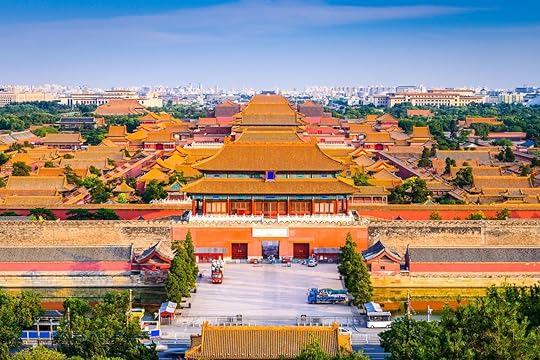
Photo: ESB Professional/Shutterstock
Located in the very center of the Chinese capital city, Beijing’s Forbidden City is a treasured remnant of China’s imperial past. Today, the fortified citadel that for centuries housed the emperors, their families, and their servants has become a UNESCO-protected historical site known as the Palace Museum.
With nearly 15 million visitors every year, the complex is far from “forbidden” these days. Its name, however, reminds us of an era during which a ticket was not enough for entering the 26-foot thick walls of the fortress. During the Ming and Qing dynasties, only the relatives of the emperor and government officials were allowed in, while commoners would be punished with death for trespassing.
Completed in 1420 under the orders of the Ming dynasty’s Yongle emperor, the Forbidden City has been the center of Chinese political power for almost 500 consecutive years. Millions of workers were employed in the construction of the palaces under the supervision of architect Kuai Xiang, although most of the architectural elements visible today have been damaged and restored over time.
The Forbidden City hosted 24 different emperors until 1911, when Puyi, the last emperor, was ordained to abdicate by the revolutionary forces. Luckily for us, the opposers of imperial power that governed China in the following decades recognized the cultural importance of this architectural wonder, preserving it for the world to see and appreciate. It was declared a key historical relic by the Chinese government in 1961 and a World Heritage site by UNESCO in 1987.
The best time to visit the Forbidden City
Beijing’s Forbidden City sees millions of tourists coming from all over China and abroad every year. Avoiding crowds is no easy task, but because the complex covers 178 acres of ground, you will definitely be able to find a quiet spot.
The high season is from the beginning of April to the end of September. For the best weather, plan your visit between March and June or between September and October. The middle of summer can be very hot, white you are likely to find fog during cold winter days.
Avoid the days around Chinese holidays such as the Spring Festival, also known as Chinese New Year (date varies from mid-January to early February), National Day (October 1), and the Mid-Autumn Festival (date varies from mid-September to early October) at all costs. During these festivities, the amount of visitors increases dramatically and navigating through massive crowds can be a gong show.
How to get to the Forbidden City, price, and hours of operation

Photo: Angelo Zinna
The Forbidden City is impossible to miss. It is located right in the heart of Beijing, at the northern edge of Tiananmen Square. Tiananmen Square East is the closest subway station, steps away from the entrance. If you can’t spot Mao’s face from a distance, you will find English language signs guiding you as soon as you emerge from the station.
When visiting the Palace Museum, make sure you bring your passport along. You will have to show it both at the security checks when you enter Tiananmen Square and when purchasing your entrance ticket. The cost of visiting differs depending on when you go. In the high season (April 1 to October 1) tickets cost 60 Chinese yuan (about 8.50 USD), while in the low season the price goes down to 40 yuan (5.70 USD).
Since 2015, the Chinese government has set the limit of daily visitors to 80,000. If you can, buy tickets in advance through the official website, however, patience is key unless you can read Chinese. Keep in mind that booths at the Meridian Gate only sell same-day tickets.
Children enter for free and visitors over 60 receive a 50 percent discount. Audio guides are available for an additional 40 yuan (5.70 USD) and there are luggage storage facilities. The Forbidden City opens at 8:30 AM and closes at 5:00 PM in the high season and 4:30 PM in the low season. It is closed on Mondays.
How to organize your visit
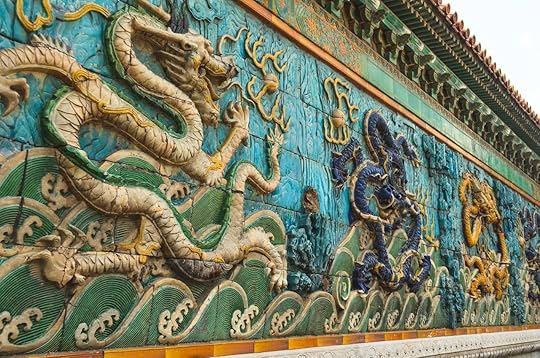
Photo: Angelo Zinna
Hidden behind the thick saffron-colored walls that form the fortress stand 980 buildings that contain nearly 9,000 rooms. While most of the interior spaces are not accessible to the general public, such numbers give you an idea of the sheer size of the Palace Museum. One can easily spend a full day exploring this ancient citadel, but if that seems too much, allow yourself a bare minimum of four hours to visit.
Once you cross the main gate you can roam freely through the courtyards, however, you’ll notice immediately that the vast majority of visitors tend to follow a similar path along the central alley. The main artery of the Forbidden City travels south to north from the ticketing booths at the Meridian Gate (Wumen) toward the Gate of Divine Prowess (Shenwumen). While crowds are hard to avoid, if you don’t enjoy being part of a massive stream of people, you can choose to deviate toward either side.
The city is split between two main parts. There is the wide outer court, also known as the southern section, where official ceremonies, weddings, and military parades used to be conducted, and an inner court, or northern section, that forms the residential area where the emperors and their wives used to live. The classic route for visitors covers these two sections and can be done in about three hours.
The outer court

Photo: Angelo Zinna
When entering from the Meridian Gate, you’ll find yourself in front of the Golden Water River. By crossing it on one of the five available bridges, you’ll reach the Gate of Supreme Harmony, where three palaces adorned with white-marble terraces and tiled roofs will appear in all of their majesty. The Hall of Supreme Harmony is the most impressive of the three outer court structures because of its dimensions and intricate woodwork. The Hall of Central Harmony and the Hall of Preserving Harmony are smaller, but nevertheless awe-inspiring.
The inner court

Photo: Angelo Zinna
Once you enter the inner court through the Gate of Heavenly Purity, you’ll discover the Palace of Heavenly Purity, the Palace of Earthly Tranquility, and the Hall of Celestial and Terrestrial Union. These three structures have changed their function over the course of the centuries. The emperors of the Qing dynasty would use the Palace of Heavenly Purity as an audience hall, while during the Ming era it became the emperor’s official residence. Similarly, the Palace of Earthly Tranquility switched from being the residence of the empress to a space dedicated to spiritual practice. The Hall of Celestial and Terrestrial Union used to host the celebrations for the empress’ birthday. Among the most intriguing attractions of this last building is the wooden chime clock made in 1798, which has been continuously running for over two centuries.
The Treasure Gallery
Whatever you do, don’t skip the Treasure Gallery, a museum inside the Forbidden City. Located near the Palace of Tranquil Longevity, this gallery hosts a large collection of everyday objects used by the imperial families of the Qing dynasty. From clothes to jewels to daily utensils, the Treasure Gallery provides insight into what life used to be like in the Forbidden City.
The eastern and western wings

Photo: Vincent JIANG/Shutterstock
Once you’ve crossed the city through outer and inner courts, if time is on your side, extend your visit to the eastern wing, western wing, or both. The main attraction on the eastern side of the fortress are the six eastern palaces, easily reachable from the Palace of Earthly Tranquility. The Palace of Great Benevolence, the Palace of Celestial Favour, the Palace of Eternal Harmony, the Palace of Great Brilliance, the Palace of Purity, and the Palace of Lasting Happiness were completed in 1420 to house the imperial concubines. Not far from the six eastern palaces is the Palace of Tranquil Longevity, erected in 1772 by Emperor Qianlong as a place to retire after his resignation.
Mirroring the eastern wing is the western section of the Forbidden City with its own six palaces. Here you will find another residential complex meant to house the emperor’s wives and concubines, and just steps away is the Hall of Mental Cultivation built by Emperor Jiajing in the 16th century. Originally constructed as a space for the emperor to rest, the Hall of Mental Cultivation became a full-time residency of the rulers in the 18th century. Here you’ll be able to view what is considered the emperor’s “office” — a room with a throne placed behind a desk.
If you have more time
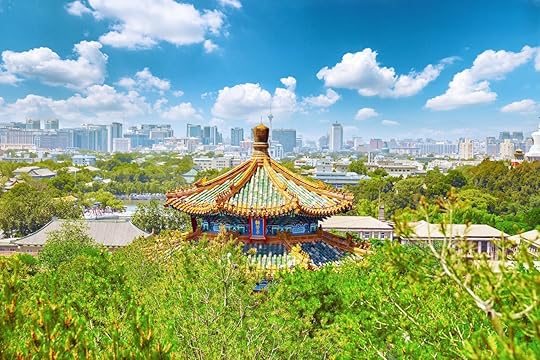
Photo: V_E/Shutterstock
If you have time at your disposal, check out Jingshan Park for incredible views over the Forbidden City. This patch of green is located on the artificial Jingshan Hill behind the palatial complex, opposite the northern gate where you exit the walls.
During the Ming and Qing dynasties, this 57-acre area used to be an imperial garden filled with fruit trees and pavilions. Jingshan Park was opened to the public in 1928, and was renovated with paved walking paths two decades later.
On top of offering stunning views of the city, the park is an ideal opportunity for a break from Beijing’s traffic.
During the high season the park closes at 9:00 PM. An entrance fee of 2 yuan (0.30 USD) is collected at any of the four entrances. 

More like this: 10 things you need to know before visiting the Great Wall of China
The post The ultimate guide to spending one day in Beijing’s Forbidden City appeared first on Matador Network.

Cheap flights in October
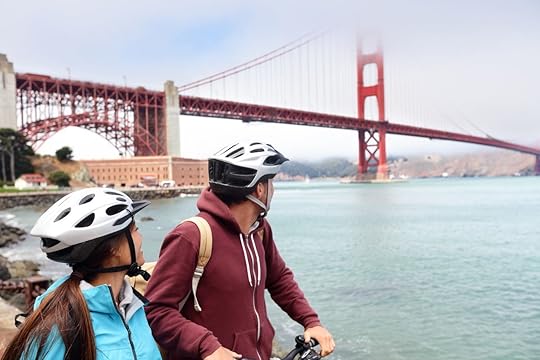
You feel that little nip in the air? That’s fall, or at least the first hints of it. And while we might not have full-on sweater weather yet, it’s getting to be the time of year where your destination options may be a little bit more limited. Luckily for all of us, we have a month or so of tolerable temps left even in cold-weather cities. And some of those have some great late-fall leaf peeping to boot.
In an effort to get folks out for one last, kinda-warm weather hurrah, many seasonal destinations will have some crazy flight deals coming up in October. How do we know this? Because the flight-price gurus at Skyscanner did a ton of research on historic airfares, scanning millions of historic prices to predict which cities will have the best deals next month.
If you’re looking to stay stateside, you’ll find some of the friendliest people who’ll ever slam you through a tailgate table in Buffalo, who has flights down 19% to a laughable $209. Seattle will get its last glimpse of sun until May, but will at least have cheerfully cheap airfares down 21% to $221. Minneapolis has some of the best outdoor recreation in the fall, but won’t have much other than ice fishing after that. So maybe jump on those $220 fares — down 15% — next month. The rest of the domestic leaderboard:
Seattle, Washington — $225 (21%)
Buffalo, New York — $209 (19%)
Fort Lauderdale, Florida — $205 (19%)
Salt Lake City, Utah — $364 (17%)
Houston, Texas — $220 (16%)
Los Angeles, California — $242 (15%)
Minneapolis, Minnesota — $220 (15%)
Charlotte, North Carolina — $229 (15%)
San Francisco, California — $241 (14%)
Denver, Colorado — $179 (14%)
Outside the US, your options aren’t quite as season-sensitive, but still offer some awesome shoulder-season deals to big-time destinations. Beijing — whose weather is pretty much just “smog with a chance of more smog” all year — will have eye-popping flights at $528, down 28%. San Jose, Costa Rica and Guadalajara, Mexico always have pleasant weather, but now might be a good time to lock down a winter trip with flights 20% cheaper to both. And there’s never really a bad time to visit Athens, whose Mediterranean climate is extra inviting with $705 airfares, 25% less than usual. The best of the rest from overseas:
Beijing, China — $528 (28%)
Santo Domingo, Dominican Republic — $321 (25%)
Athens, Greece — $705 (23%)
Madrid, Spain — $456 (23%)
Milan, Italy — $564 (22%)
Warsaw, Poland — $686 (21%)
Medellín, Colombia – $414 (20%)
San Salvador, El Salvador — $431 (20%)
San Jose, Costa Rica — $361 (20%)
Guadalajara, Mexico — $271 (20%)
Much like the weather getting colder in the fall — at least the past few years — these airfares aren’t a lock, so you may want to take advantage of them soon. You can do that by downloading the Skyscanner app, looking at your locations and dates, and letting it find the best deals for you. Or you can enjoy the last remaining days of fall sunshine searching for flight deals online. And even if winter does come a little early, you’ll have plenty of leftover money for a nice new jacket. 

More like this: The best places to travel this November
The post Flights to these cities are about to get crazy cheap in October appeared first on Matador Network.

Mont Blanc glacier collapse

One of the glaciers on Western Europe’s highest mountain is in danger of collapse.
It is feared that 250,000 cubic meters of ice will break away from the Planpincieux glacier on Mont Blanc, so Italian authorities have ordered the closure of roads, as well as the evacuation of homes and mountain refuges as a precautionary measure in the area of Val Ferret.
Experts estimate that sections of the Planpincieux glacier are sliding at speeds of 16 to 23 inches per day. Rising temperatures around the world are causing the global melting of glaciers, as well as the retreat of polar ice sheets, so the condition of the Planpincieux glacier isn’t exactly a surprise.
Stefano Miserocchi, the mayor of Courmayeur, said in a statement, “These phenomena once again show how the mountain is going through a period of major change due to climate factors and, therefore, it is particularly vulnerable. In this case, it’s a temperate glacier particularly sensitive to high temperatures.”
Italian Prime Minister Giuseppe Conte highlighted the seriousness of the situation in a climate change speech to the UN General Assembly. “It is now news that a glacier on Mont Blanc risks collapsing,” he said. “It’s an alarm that cannot leave us indifferent. It must shake us all and mobilize us.” 

More like this: You need to see these glaciers before they’re gone
The post Mont Blanc glacier at risk of collapse triggers evacuations appeared first on Matador Network.

The best things to do in Hyderabad

Standing right in the center of old Hyderabad, in the state of Telangana in southern India, the majestic 16th-century Charminar monument acts as a crown to the city built by the Nizams. Hyderabad is often referred to as the City of Nizams, referring to its former monarch, the Nizam of Hyderabad. Unlike many old cities, this metropolis of nearly eight million has transformed itself with the times. Its core blends the cultural history of southern India with modern technology, art, and fascinating architecture, and its tech-y aspects — including a free, 3,000-hotspot Wi-Fi network known as the “Hy-Fi” — have helped the city build a name as an IT capital. Yet the old city still shines enchantingly through its architecture like jewels on a crown, and it remains the most important aspect to see on a trip here. These are the places you must see in this ancient city.
Start by walking around the Charminar.
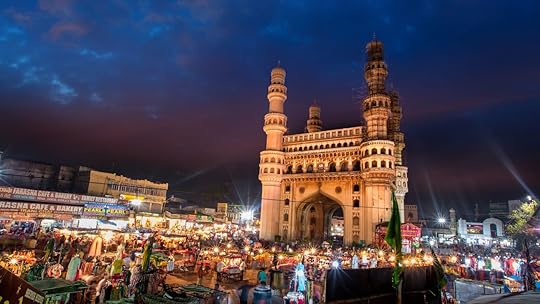
Photo: SNEHIT/Shutterstock
Constructed by Sultan Muhammed Quli Qutb Shah in 1591, Charminar means four turrets (char meaning four and minar meaning turret) in reference to the beautifully carved pillars that enclose spiral staircases for visitors to climb to the top and catch a view of the maze-like lanes that lead to the Charminar. On one side you will be able to see the stunning Mecca Masjid. The structure is open from 9:30 AM until 5:30 PM daily and costs about $1.50 to enter for foreigners.
The Charminar wakes with the city at dawn to the smell of fragrant Irani chai and freshly baked Osmania biscuits. This is an ideal time to visit the Charminar, not only because you can take in the sun rising over the monument but because you can then stop by the nearby Nimrah Cafe and Bakery to taste the biscuits firsthand. Soon after sunrise, the streets bustle with bangles, traditional Indian bracelets typically made of metal, wood, or glass. Walk your way around the Charminar toward the Laad Bazaar. Jewelry sellers on the street will promise you their pearls are original, but your best bet for authenticity is to head to the shops inside the bazaar, where exquisitely crafted pearl jewelry is sold. The bazaar is open from 11:00 AM to 11:00 PM every day.
Tour Mecca Masjid.

Photo: arun sambhu mishra/Shutterstock
The construction Mecca Masjid was started by Sultan Muhammad Quli Qutub Shah in 1614. It is one of the oldest mosques in India with a main hall capable of hosting 10,000 worshippers. Walk around the mosque to appreciate the intricately carved minarets and arches. Find the right angle and the cleansing pond reflects the mosque in a mirror effect. The facility houses the tombs of rulers from the Asaf Jahi dynasty who emigrated to the area from what is now Uzbekistan in the late 1600s. While it is free to enter the courtyard, non-Muslims are not allowed into the mosque and must be dressed appropriately in the courtyard area.
Visit Chowmahalla Palace.

Photo: Sumit Kr Bhui/Shutterstock
Just a short distance away is the Chowmahalla Palace. Built in the 18th century, the Chowmahalla complex’s architecture is said to resemble the Shah Palace of Tehran in Iran. The largest palace in the complex, Aftab Mahal, is a two-story building visible from the outside. However, it is the Grand Durbar hall that stands out the most as you approach the palace. On the outside, large arches and Mughal domes intricately decorated with Persian art adorn the building. Inside, stunning crystal chandeliers hang under intricate ceilings with the marble royal seat in the center.
In its heyday, 7,000 attendants were employed to maintain the complex. Outside, the lawns are beautifully landscaped while a huge water fountain can be found right in front of the palace. The clock in the courtyard has been ticking since the palace was fully constructed. The galleries of the palace display an interesting collection of clothes, weapons, furniture, coins, the Quran, historical photos, and more. As a foreigner, you can see the palace for about $2.85 per person, and if you’re willing to pay an extra $0.70 for permission to take photos or $1.40 for permission to film using a video camera, you can even document the experience, though tripods are not allowed. The palace is closed on Fridays and national holidays.
Learn about the cultural history of the Indian subcontinent at the Salar Jung Museum.

Photo: fotosunny/Shutterstock
The Salar Jung Museum is one of the world’s largest one-man collections and the third-largest museum in India. Most of the collection was collected by Mir Yousuf Ali Khan, popularly known as Salar Jung III. He was an inspiration to many Indians and historians, dedicating his life and wealth to collecting antiques and artifacts from India and all over the world. His collections were endowed to the museum after his death. Some 43,000 artworks, 9,000 manuscripts, and 47,000 printed books are spread across 38 galleries on two floors of the building. The galleries house different collections of unique artifacts and artworks ranging from ivory-carved objects to rare manuscripts and art.
Among the most notable sculptures on display is the “Veiled Rebecca,” which was created by Italian sculptor Giovanni Maria Benzoni in 1876. The museum also features Raja Ravi Varma paintings that are classified as priceless, miniature Mughal paintings; the Mughal Emperor Aurangzeb’s sword; and even daggers belonging to Emperor Shah Jahan and Nur Jahan. However, the most popular item in the museum is a 200-year-old British musical clock, where a miniature toy figure comes out and strikes the gong every hour. The museum is open from 10:00 AM to 5:00 PM, except on Fridays, and costs just over $7 to enter with an additional fee for camera access.
Make your way down the biryani trail.

Photo: fotosunny/Shutterstock
No trip to Hyderabad is complete without a taste of the city’s most exquisite dish: the Hyderabadi biryani. A whiff of the dish will have you salivating, so good luck leave without several tastings under your belt. Fortunately, the city is itself a trail of biryani from one side to the other, and you’ll never have to walk far to satisfy the craving. Biryani is a rice dish cooked with spiced chicken or mutton that has been sealed in a container for a long period of time. While Hyderabadis as a whole cannot agree on which is the best biryani, Paradise and Bawarchi stand out as crowd favorites. While Paradise has branches across the city, Bawarchi only has one restaurant located at RTC X Roads. 

More like this: 7 amazing monasteries to check out in Ladakh, India
The post The most fascinating places you need to see in Hyderabad, India appeared first on Matador Network.

Via ferrata in British Columbia
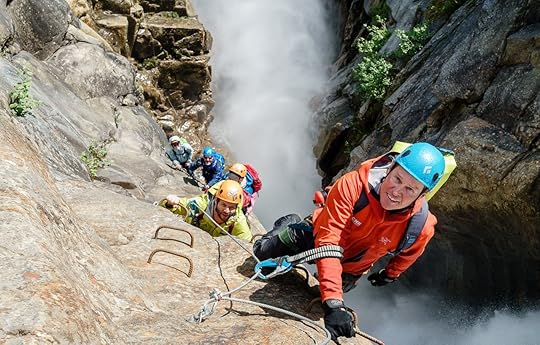
If you have no climbing or trekking experience, it’s hard to imagine spending days exploring the beautiful but difficult mountainous terrain of British Columbia without ending up injured and lost, or worse — looking like a fool. To save you from a certain death and a great deal of embarrassment, Canadian Mountain Holidays (CMH) has come up with a solution: heli-hiking. It transports you by helicopter into the high alpine and glacier country. It’s virtually untouched territory. In the Cariboo Mountains, CMH has also built a brand-new via ferrata in a dramatic waterfall-filled canyon. It’s an experience you will never forget.
What’s a via ferrata, anyway?
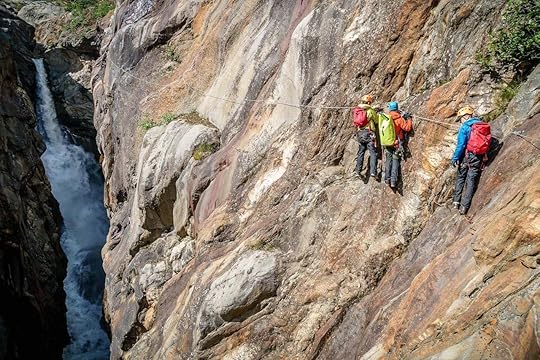
Photo: Carlo Alcos
Via ferrata means “iron path” in Italian, and that’s essentially what it is. The warring Italian and Austrian soldiers famously constructed pathways in the Dolomite mountains using fixed lines and iron climbing aids in World War I as a way to gain high ground and transport troops. But even before the war, more primitive versions of via ferratas (or via ferrate, as the Italians would say) were built in the Alps to connect villages to pastures at high elevations.
Modern via ferratas are built with recreation and tourism in mind. They’re built in extreme landscapes and allow people with no mountaineering experience to be in places and situations they never would otherwise, like vertical cliff faces and steep-walled canyons with raging waterfalls flowing through them.
A via ferrata in the wilds of British Columbia
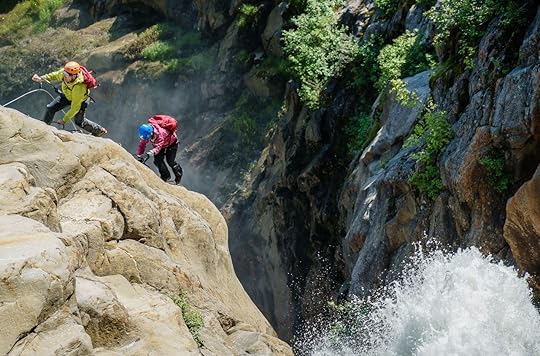
Photo: Carlo Alcos
This past July, I was in the Cariboo Mountains to experience the brand-new Zillmer Canyon via ferrata. Its base lodge is CMH Cariboos, a short helicopter ride from the town of Valemount, BC. Although the lodge is in very remote wilderness, it’s not lacking for luxury. And it has amazing views of the beautiful Canoe glaciers.
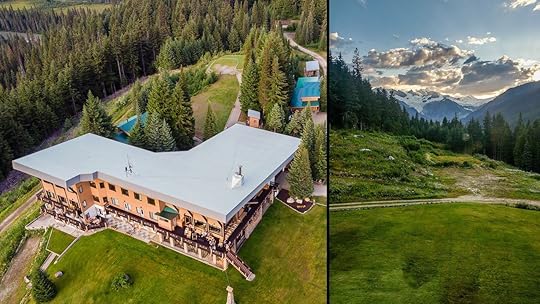
Photo: Carlo Alcos
From the lodge we were choppered to the base of Zillmer Canyon. When the sound of the helicopter receded it was replaced by the constant roar of a waterfall tumbling through the canyon and throwing spray in all directions. With our harnesses and helmets on (and rain gear to stay relatively dry) we were first led across a zip line that carried us over the raging creek, then we maneuvered along steep cliff walls, tethered into steel fixed lines that ran the length of the canyon.
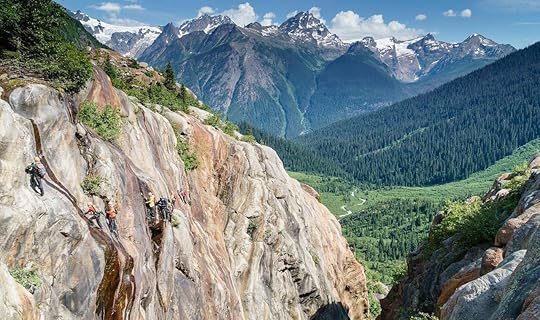
Photo: Carlo Alcos
We climbed up walls on iron rungs, crossed a gap-filled suspension bridge, and walked on single wires in other spots to navigate our way up and through the canyon. The path diverged a couple of times to accommodate different physical abilities and comfort levels, and we were split into groups to allow for different paces. Being a rock climber I’m used to lots of exposure high off the ground, but for many people, the mental challenge of the heights was something to overcome. One of the guests, after steeling herself for the walk across the suspension bridge, got a big bear hug from the guide at the other end. I later asked her if she was proud of herself for doing it; her huge smile said it all.

Photo: Carlo Alcos
The via ferrata topped out in a gorgeous valley with views onto glaciers and waterfalls pouring down the mountain sides. And one more zip line for good measure. CMH has already started building phase two of the route, which will take guests even higher for a full day of via ferrata adventure.
If you don’t mind heights and like a bit of an adrenaline rush, check out what it’s like to trek the Zillmer Canyon via ferrata by watching the video below. 

More like this: Why British Columbia is the hottest place for snowmobiling
The post Here’s how to explore British Columbia’s wilderness with zero outdoors skills appeared first on Matador Network.

German court hangover ruling

The German courts are coming in clutch just in time for Oktoberfest. According to a ruling by the Higher Regional Court of Frankfurt, hangovers are now legally classified as a disease. The court determined that any minor disturbance in the body’s normal functioning is considered an illness, and that certainly applies to hangovers.
“They do not occur as a result of the natural ‘up and downs’ of the body,” the court said, “but as a result of the consumption of alcohol, a harmful substance.”
The ruling was made against an unnamed company selling merchandise claiming to be able to cure hangovers.
The court’s decision means that a company cannot claim its products are capable of curing hangovers. It does, however, give partygoers and Oktoberfest travelers an excuse for skipping work, school, and shirking their other responsibilities. After all, they’ll be recovering from a “disease.”
Whatever magic products you may have found or tips you may have been given, you won’t be able to just pop a pill and feel good as new. The only way to prevent a hangover is by not drinking. 

More like this: The only guide to Oktoberfest in Munich you’ll ever need
The post A German court ruled that hangovers are officially a ‘disease’ appeared first on Matador Network.

Best Oktoberfests in the world

Oktoberfest doesn’t actually start in October. The original festival in Munich starts in mid- to late-September every year. Though that doesn’t stop your local German beer hall from throwing parties through Halloween, if you had a sudden aspiration late in the year to do Oktoberfest in Germany, that sudsy ship has likely sailed.
The good news is not every country is so strictly German about Oktoberfest timing. In fact, some of the top Oktoberfests in the world don’t happen until well into October. Here’s a look at some of the most surprisingly awesome Oktoberfests outside Germany.
1. Blumenau, Brazil
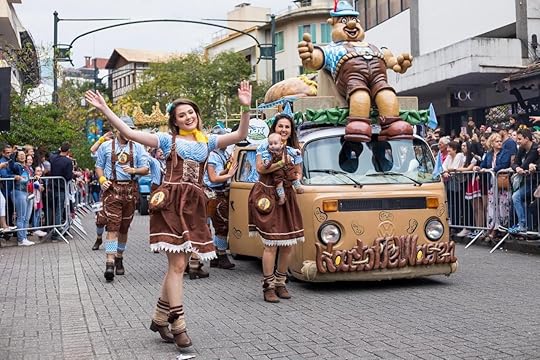
Photo: Oktoberfest Blumenau – Oficial/Facebook
Oktoberfest in Brazil might seem like an odd concept, but there’s actually a sizeable German population throughout South America. Blumenau is a German town in the southern state of Santa Maria that flawlessly combines a Bavarian beer drinking festival with nonstop Brazilian celebration. The town was settled in 1850 by a German pharmacist, and is about as close to the Alps as you’re getting in Brazil, with a beer garden set up in Para Hercílio Luz, a beer museum, and a place called Sausage Street.
This year marks the 36th Oktoberfest in Blumenau, where you’ll find beer-chugging contests, live music, and loads of Brazilian and German beers. It runs from October 9-27, kicking off with a huge parade of traditional German folk dances and floats, and continues through two weeks of partying as only Brazilians can.
2. Hong Kong

Photo: The Marco Polo German Bierfest/Facebook
Though Oktoberfest is decidedly an Old World European celebration, it fits surprisingly well under the imposing towers of the Hong Kong skyline. That’s where you’ll enjoy the biggest Oktoberfest celebration in Asia, Marco Polo German Bierfest, which takes place in the parking lot of the Marco Polo Hotel. Though Polo himself was Italian, that little detail is overlooked from October 17-27, when beer is free flowing and German folk band Die Notenhobler plays from 7:30 PM to 11:30 PM nightly.
Literally thousands of people show up each evening for the band’s shows under a gazebo made to look like a merry-go-round. Under the stage, a sea of long tables welcomes guests with two-for-one beers from 6:00 PM to 7:00 PM and a party that goes until midnight. This year, it is also introducing a transparent marquee so you can enjoy the skyline without having to step outside.
3. Windhoek, Namibia

Photo: Oktoberfest Namibia/Facebook
If you’re unfamiliar with the history of African colonialism, Namibia was once a German colony in the early part of the 19th century. Though much of the country’s culture has been returned to its native people, the continent’s largest Oktoberfest lives on as a weekend-long celebration of beer in Africa.
The event has the feel of a German Oktoberfest with a decidedly African twist. Features like zebra lederhosen and cheetah print steins are a normal part of the party. Sure, those clothes made for mid-fall Europe can get a little sweaty during the African summer, but you’ll still find plenty of light Namibian beer to help cool you off. The celebration, originated by German settlers on the outskirts of town over 60 years ago, has grown into one of the biggest parties of the year, welcoming European visitors, expats, and locals alike.
4. Brisbane, Australia

Photo: Oktoberfest Brisbane/Facebook
Though relatively new to the Oktoberfest scene, Australia’s largest celebration has some of the most entertaining events of any Oktoberfest in the world. Leave it to the Aussies to take a beer-and-brat holiday and introduce stuff like a Bavarian Strong Man competition, complete with nailing and donut-eating contests. The Australians also have a women’s division where women compete in steinholding, cow-milking, and “dress like a Bavarian” contests. There’s also a beard competition (presumably just for men) with natural, freestyle, and moustache divisions.
Beyond the human spectacles, Brisbane has plenty of beer, mostly from Tucher, the beer brand that sponsors the event, as well as from local Burleigh Brewing, which provides the dark dunkels. You’ll also find a massive German food hall and live music until midnight on Fridays and Saturdays. The festival runs over two weekends in 2019: October 5-7 and 12-14.
5. Tulsa, Oklahoma

Photo: Tulsa Oktoberfest/Facebook
While Cincinnati probably has the best-known Oktoberfest party in America, many people overlook little Tulsa, Oklahoma, which hosts one nearly as crazy every year. The annual festival, dubbed Linde Oktoberfest, takes over River West Park on the third weekend of the month, where people partake in hoisting steins and events like keg races, wiener dog races, and beer pong. Because America, dammit.
Linde Oktoberfest also gives you the chance to do the chicken dance in the place it was first introduced to the USA. Yes, the wing-flapping dance craze made its American debut as part of the polka band festivities back in 1981, which have since evolved into a full-on German music festival. There’s also plenty of food and some of the best weather of any Oktoberfest in the world, as anyone who’s been to Oklahoma this time of year can attest.
6. Tokyo, Japan
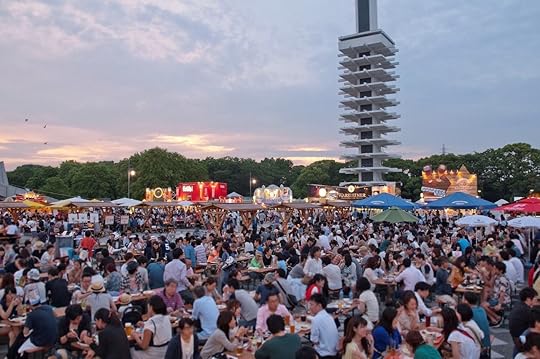
Photo: “ドイツビールの祭典”オクトーバーフェスト/Facebook
When you’re in one of the biggest cities in the world, one Oktoberfest simply isn’t enough. That’s why Tokyo’s version of the German tradition has two events — one in April and another near the end of August, making both some of the earlier Oktoberfests in the world. Both events take over the man-made island of Odaiba in Tokyo Bay and offer a huge selection of Bavarian beers alongside loads of Japanese favorites.
The atmosphere on Odaiba is a little surreal, with polka music playing in the background as you stroll past Japanese signs and food stalls offering everything from pizza to shaved ice. You can still find traditional German food, too, like pretzels and sausages.
7. Kitchener-Waterloo, Canada

Photo: Kitchener-Waterloo Oktoberfest/Facebook
Though exact statistics don’t really exist for Oktoberfest sizes, these Canadian twin cities have a good claim to hosting the largest outside Germany. Over 700,000 people show up to celebrate over nine glorious days. This year marks the 50th anniversary of the festival, which also takes place during Canadian Thanksgiving and has the country’s largest Thanksgiving parade.
Much like it is in Munich, this festival is spread out all over the city, featuring 17 different festhallen full of beer, music, and live entertainment. The whole week is packed with events other than the parade, including barrel races, a Miss Oktoberfest pageant, an Oktoberfest fashion show, and, because it’s Canada, axe throwing. Plus, there’s a contest where local radio stations make Oktoberfest-themed parodies of top 40 songs.
8. Stockholm, Sweden

Photo: Stockholm Oktoberfest/Facebook
When October has sunsets around 4:00 PM, you’ve gotta get your Oktoberfesting in early. That’s why Stockholm hosts one of the first Oktoberfests of the year, kicking off the festivities in mid-August. This ensures plenty of daylight to enjoy the weekend-long festival of beer, food, and pop music.
Don’t you dare think of coming to Sweden without your dirndls and lederhosen either. Nearly everyone who attends the festivities in Stockholm is dressed up, and failing to dress up too will make you look like that guy who refuses to wear a costume to a Halloween party. German garb or none, you’ll still be able to get in free on the festival’s first two days, a major plus in one of Europe’s most expensive capital cities.
9. Frankenmuth, Michigan

Photo: Frankenmuth Oktoberfest/Facebook
Tiny Frankenmuth, Michigan — population 5,247 — has a special place in the annals of Oktoberfests worldwide, decreed in 1996 as the first celebration to go on with the official blessing of the Munich original. It was also the first place to import Hofbrauhaus beer in the United States, as the storied Munich brewery became an official sponsor in 1997.
Today, the town in the heart of “Little Bavaria” swells to nearly four times its size for this end-of-September blowout. If you can find a hotel room you’ll also find plenty of good-natured Midwestern beer drinkers enjoying pretzels, schnitzel, and live Bavarian music on a big wooden dance floor. This year marked the 30th anniversary of Frankenmuth’s Oktoberfest. 

More like this: 10 best Oktoberfest celebrations in the US worth traveling to
The post 9 cities around the world with surprisingly huge Oktoberfests appeared first on Matador Network.

September 24, 2019
The best things to do in Sri Lanka
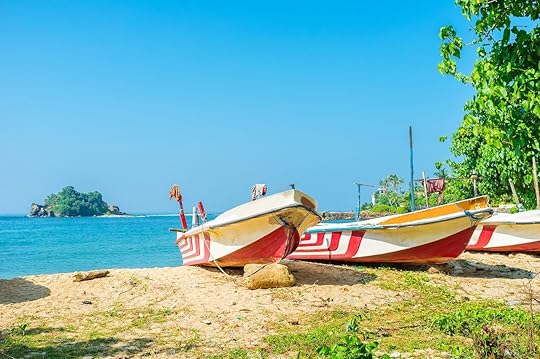
Following the tragic church bombings in the nation’s capital Colombo last April, interest in visiting Sri Lanka is slowly starting to rise again, and the country is eager and ready to welcome tourists back. Now is actually the best time to explore Sri Lanka as the crowds are few and prices are low. For those who seek adventure, the southern coast of the island nation offers a plethora of offerings, among them stunning beaches, wildlife, a chill vibe, and great food.
The best way to get to know the area is to board the coastal line train from Colombo and head south to Galle. From Galle, work your way down to rustic southern corners in Hambantota. Along the coastline, you will surf, hike, and explore the national parks — and, of course, swing in a hammock with a chilled thambili, or king coconut. Here are the best things do on Sri Lanka’s southern coast.
Swing into the ocean.

Photo: BlueOrange Studio/Shutterstock
A lively coastal hamlet, Unawatuna is a quick tuk-tuk ride away from Galle. Wijaya Beach in Unawatuna is usually crowded, whereas Jungle Beach offers perfect scenery. If you want to swing into the Indian Ocean on one of the Instagram-famous swings, head to Dalawella Beach. It costs $2 per person. For budget travelers, La Boheme is a cozy place with hipster vibes. If you want to stay inside the Galle Fort, opt for Pedlar’s Inn Hostel.
Chase the waves in Weligama and Midigama.

Photo: Aleksandar Todorovic/Shutterstock
Weligama is a bustling fishing town. A wide-open, two-mile-long sandbank hugs the Bay of Weligama and offers perfect surfing conditions for beginners and intermediate surfers. The beach break sits in the bay and is open for surfing throughout the year. Go north of Weligama and there you will find the sleepy Midigama Bay. There are two mellow breaks which sit opposite one another in Midigama: Lazy Lefts and Lazy Rights. The former is frequented by longboarders, while beginner and intermediate surfers flock to Lazy Rights looking for their first reef break. Ceylon Sliders, located in Weligama, conducts surf lessons year-round while its sister property Sunshine Stories organizes surf retreats.
Watch the giants of the ocean.
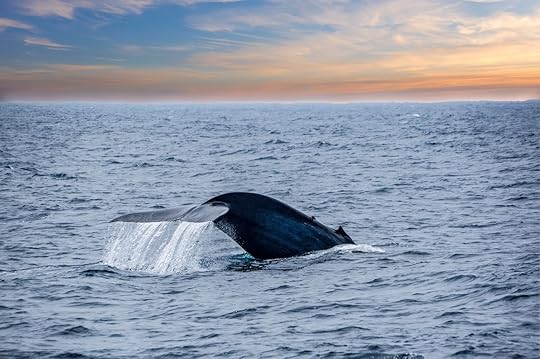
Photo: bildundmeer/Shutterstock
Mirissa is located a few miles south of Weligama, and is popular for its laid back vibe. Hop on a boat with Raja & the Whales to see the blue whales, who are the largest existing creatures on Earth. These ethical marine tours are run by a local family with certified guides. A few miles off the coast, you’re able to spot fin whales, sperm whales, bottlenose dolphins, spinner dolphins, turtles, manta rays, and sharks. Once you see these marine giants, head to the ‘gram-famous Coconut Tree Hill in Mirissa. The palm-tree fringed sandhill offers picture-worthy scenery and the perfect spot to watch the sinking sun.
Climb up the hill to visit a rock monastery.

Photo: Viacheslav Lopatin/Shutterstock
Once you are in Tangalle, a mellow coastal town with several powder-like beaches, head inland to Mulkirigala, a monastery from the second century BC. Tucked away in the green jungle, you will find the beautiful temples perched on a rugged terrain. Climb up some 500 odd steps and you can see the temple complex from several terraces. There are a few cave temples with large Buddha statues and wall paintings that depict Hindu deities and Buddhist stories of the bygone era. Mulkirigala also houses a pagoda perched on top of the rock. Getting here involves a steep climb from the base, but the panoramic view of the surroundings is worth it.
Go on a wildlife safari.

Photo: krivinis/Shutterstock
The south of Sri Lanka houses several national parks. Places such as Yala National Park are immensely popular among tourists. However, it’s one of the few places to spot the Sri Lankan leopard. For those who want to see elephants, go on a day trip to Udawalawe National Park. Near the national park is Elephant Transit Home, a government-run ethical wildlife initiative that looks after orphaned baby elephants until they become independent enough to be released back to the wild. You can buy a ticket for $5 and see the baby elephants being fed milk. Feeding takes place four times a day. Entrance fees for Yala and Udawalawe national parks are around $15, but there are taxes and other small charges. A jeep usually costs $16-22 for a trip.
Play with sand dunes.
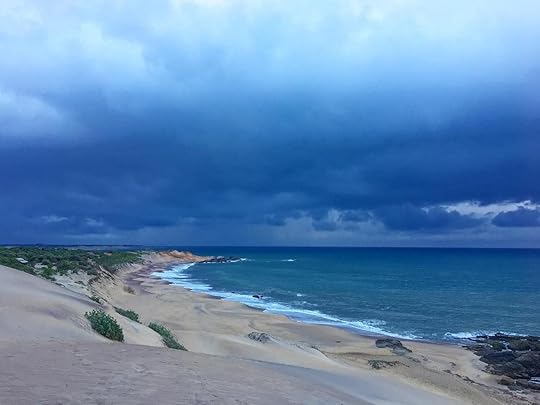
Photo: Back of Beyond – Sri Lanka/Facebook
Palatupana is a sleepy little deserted hamlet that borders the Yala National Park. There are long sandbanks and far-stretched dunes in Palatupana with no soul in sight. On good days, you can swim in the ocean and take a dip in the natural rock pools. Long sandbanks are dotted with wildflowers and shrubs, creating stunning vistas. Back of Beyond provides luxury glamping by the dunes in Palatupana. If you are on a budget, however, opt for Yala Yin Yang Hostel. The soul-fulfilling hostel is nestled in a beautiful garden, which is frequented by dancing peacocks, lizards, and vibrant birds. There are plenty of hammocks in the garden to relax in with a book.
Join a yoga retreat.

Photo: Talalla Retreat/Facebook
The thriving surf culture in the south has also brought in a wellness-oriented vibe to the region. Talalla Retreat, just south of Matara, hosts several beach retreats a year, including yoga, meditation, organic meals, surfing, and luxury-style accommodation by the sea. Tucked away in the tropical garden in Ahangama, you will find Camp Poe. The unique camp-style stay has options for all budgets. Adorned with bohemian decor, the lovely retreat also hosts fun music workshops on the weekend.
Eat, drink, and repeat.
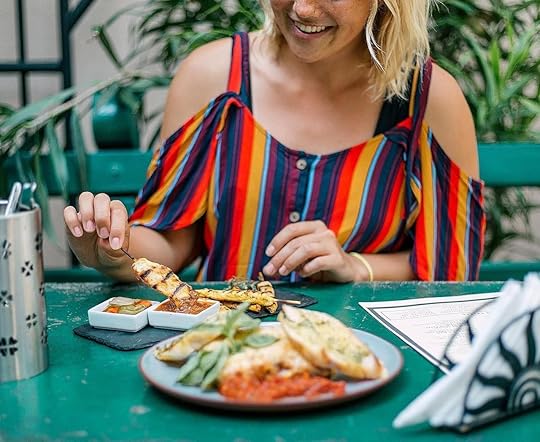
Photo: Bedspace/Facebook
The southern region of Sri Lanka is home to cozy cafes, chill hideouts, and a plethora of up-and-coming restaurants serving delightful fusion cuisine. Here are some of the best places.
Aloha Coffee Gallery — A dreamy little place, Aloha serves flavorsome, healthy meals. It’s a top spot in Mirissa for brunch, and you can pick avocado toasts with a Sri Lankan twist, smoothie bowls, and iced coffee served with vegan coconut milk.
Hangover Café — The cafe of Mirissa’s famous Hangover Hostels provides a communal, easy-going atmosphere in a colorful space. It’s popular for its “Suicide” burgers. It also has creamy pasta dishes, sandwiches, and tortilla wraps.
Lucky Fort Restaurant — This family owned restaurant inside Galle Fort is one of the top places for local rice and curry in the south. You will be served nine vegetable curries and one chicken curry along with rice. Curries are cooked in the Sri Lankan-style with coconut milk and flavorful spices.
Bedspace — For a delightful seafood meal, there’s hardly a better place than Bedspace. The communal restaurant is located in the garden of the Bedspace guest house. A perfect blend of Sri Lankan and international flavors, Bedspace serves a range of amazing dishes. Try the pad thai, black pork curry, and the coconut lemongrass soup. You can also pick up your double espresso here. 

More like this: The 8 most epic hiking trails in Sri Lanka
The post Surf, sand dunes, and smoothies on Sri Lanka’s south coast appeared first on Matador Network.

The best tampon alternatives

When it comes to that time of the month, tampons are the go-to option for most. They’re small, comfortable, and easy to use. But they’re not without their drawbacks. Many contain chemicals which, though present in harmless quantities, many people are still uncomfortable about putting in their body. There’s an environmental concern too: According to a 2017 Stanford Magazine article, around 7 billion single-use tampons are thrown away each year in the US alone.
Environmental factors aside, tampons just aren’t always practical when you’re traveling: They’re difficult and sometimes impossible to find in parts of the Middle East, Africa, and much of East Asia — and it’s not always feasible (or comfortable) to wear a pad or stuff your backpack with a year’s supply of bulky boxes. There’s also toxic shock syndrome to worry about: You can safely wear a tampon for four to eight hours, which doesn’t work when you’re stuck on a 12-hour night bus or spending all day on a remote beach.
From yoga pants to menstrual cups and period thongs, there are a whole load of surprisingly effective (not to mention environmentally friendly) options out there. They won’t all be perfect for everyone, but when backpack space and budget is at a premium, here are 10 genius tampon alternatives to take traveling with you.
1. Period pants and boyshorts
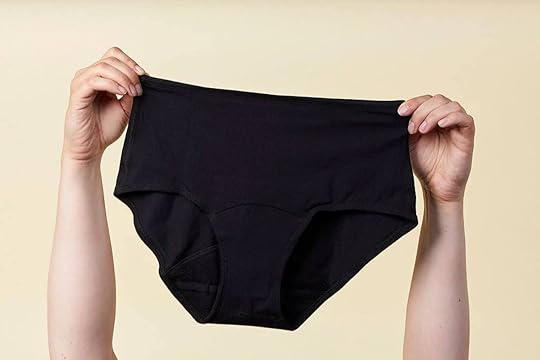
Photo: Lunapads/Facebook
There are a huge range of comfortable, effective, and downright sexy designs to choose from, not to mention several brands producing boyshort, brief, and boxer options for trans men and gender nonconforming women. Check out Lunapads for some excellent products.
Because you’ll (hopefully) pack underwear to take traveling with you, swapping a few of your regulars out for some of these means you don’t lose any of that precious backpack space to period-related paraphernalia. They’re also super easy to use (just wear them as you would normal underwear), they don’t need to be sterilized before use (just pop them in the wash when you’re done), and they’re non-disposable, which is better for the environment. These are also a great option for those days toward the end of your cycle when you’re not spotting enough to wear anything heavy-duty, but still enough to cause problems without a pantyliner.
Now the downsides. Certain styles can feel bulky and warm, so if you’re traveling in a hotter country, opt for thong designs, or wear under loose-fitting clothing. They’re also pretty expensive (around $30 each), and realistically, you’ll need at least two pairs on rotation. That said, once you have them, provided you take care of them, they should last for years.
2. Period sponges
There are two different types of period sponges: synthetic and natural. Menstrual sea sponges are an all-natural alternative to tampons and when properly cared for, should last up to six months. So if you’re on the road for a year, that means you’ll only need to pack two, which, considering they’re tiny, squishy, cheap, and biodegradable, ticks all the boxes when it comes to traveling must-haves. But — and it’s a big one — they are potentially dangerous. Many have been tested and found to contain grit, bacteria, and mold which can disrupt the ph levels inside your vagina or give you toxic shock syndrome, and there are currently no FDA-approved brands on the market. Getting any kind of ailment abroad can really put a damper on the experience, so our advice is to not risk it until a gynecologist and government-approved version hits the market.
Synthetic sponges, such as the German-made Beppy sponge, don’t have the all-natural, reusable credentials but they are non-toxic and specifically designed for your vagina, which means you’re not putting yourself at undue risk. A major benefit is you can wear them during sex.
3. Menstrual cup

Photo: Mooncup/Facebook
This is essentially a small, flexible cup made of silicone or latex that you fold up then insert into your vagina. Once it’s in place, it springs open to form a watertight seal and collects your period blood for 8-12 hours (depending on how heavy your flow is). When you’re ready to change it, simply pull it out (there’s a little stem on the bottom you can grab), empty the contents in the loo or sink, then wash the cup and reinsert it. When your period’s over, sterilize the cup and store it in an airtight container for your next use.
It’s perfect for travel because you can strut around in a bikini without worrying about those telltale little white strings poking out. It also holds more than a traditional tampon, so you can wear it for longer (up to 12 hours, as opposed to the four to eight hours recommended for tampons), which is great news if you’re on the beach all day and might not have access to bathrooms or bins. It’s good for your wallet and the environment: You can buy one for around $20. Check out the range at Mooncup. Once you have it, it’s reusable and should last anywhere between two and 10 years — perfect for when you’re traveling on a shoestring budget or on an unpredictable income.
Removal can also be messy, especially on your first few tries — so it’s a good idea to try it out before you travel. You should always wash your hands with sanitizer when inserting and removing it, and in countries where the water isn’t safe to drink, you should clean it using sterilized water before reinserting. It’s also a good idea to bring a spare, just in case you find yourself in a situation where you can’t clean it but still need to wear something; wrap the used one up in an airtight bag or container and thoroughly clean it before your next use.
4. Yoga pants
Period bloat can make you feel like nothing fits, so wearing comfy clothing is a must. These pants, from Dear Kate, feature a form-fitting gusset that catches drips while you hike, work out, do yoga, or lounge around. Most designs are made of a swimsuit-like material, so they’re cool to wear and quick to dry. The downside is, they’re reportedly not always entirely leak-proof, especially if your flow is heavier — so they’re better for the lighter days if you want to wear them with nothing at all, or for teaming up with another method of period protection for extra security on heavy days when you’re worried about drips.
Quality varies, so do your research before you purchase. Some reportedly have a bulky gusset that looks a bit camel toe-y, which doesn’t do much for your confidence when trying to be as discreet as possible. Other options are pretty pricey — think $100 or thereabouts. But, as with the other period wearables, once you have them, they’ll last you a long time and save you having to wear pantyliners while working out.
When it comes to changing and cleaning, just pop them in the wash with the rest of your clothes. If you’re worried about the blood situation, you may want to give the gusset a rinse in the sink or shower before you put them with the rest of your laundry.
5. Cloth pads for panties and boxers

Photo: Lunapads/Facebook
These work in exactly the same way as pads and pantyliners, except they’re reusable which is better for the environment, they take up less space in your luggage than hundreds of their disposable counterparts, and once you’ve made that initial payment, you shouldn’t have to fork out for pads for years to come — perfect if you’re on a budget or liable to have months where you’re short on cash. They also come in an array of colors and designs, including gender-neutral options for trans men and non-feminine women who want to move away from the pink and flowery branding featured on most sanitary products on the market.
To clean, just chuck lightly used pads in with the rest of your laundry and dry before wear. At the end of heavy flow days, separate the insert from the exterior fabric and soak in cold, clean water before adding to your regular washing.
6. Sterile gauze
This is more for when you’re on an extremely tight budget or can’t find sanitary items anywhere. Simply fold it into multiple layers and pop it in your panties or boxers. It’s safe and sterile, but it does need to be changed more quickly than a regular pad or tampon.
7. Reusable menstrual disk

Photo: Intimina/Facebook
This operates in much the same way as a menstrucal cup, with one major difference: You can wear it during sex. It’s a lot smaller (it looks a little like a contraceptive diaphragm or unopened condom) and is designed to sit a little further back. Once it’s in place, you can enjoy leak-free traveling (provided it’s inserted properly) and period sex without the mess for up to 12 hours. The major drawback to the disc is the removal process: While relatively easy to take out, it can be messier than a menstrual cup, so your best option is to try it out a few times before you go and just to be safe, and remove it in the shower if possible. As with the menstrual cup, make sure you use sterile water to clean it and store it in an airtight container or ziplock bag. It’s also a good idea to buy a couple, just in case you need to change it and you don’t have access to sanitation facilities. Ziggy Cup is currently the only reusable version on the market.
8. Eco-friendly tampons and reusable applicators
Eco-friendly tampons are an alternative to traditional supermarket brands, which can be somewhat limited if you’re looking for something that doesn’t contain chemicals or come wrapped in plastic.
If you’re someone who needs an applicator, then check out DAME Products’ reusable version that was created to help minimize the amount of plastic waste in the ocean. It comes in gender-neutral green and is made from medical-grade silicone, so it’s safe for your body and you’re doing your part in protecting the environment. Tampons that come with single-use applicators are bulkier than non-applicator versions, so if you opt for this reusable version, you’ll also save precious backpack space. Another major travel benefit is that it’s self-sanitizing, so all you need to do is rinse it (use sterilized water if the tap water isn’t drinkable), dry it, and store it away for next time.
9. Period swimsuits

Photo: Ruby Love/Facebook
Swimming is really the only time you absolutely can’t wear a pad, so this is a great option if you know you’ll be traveling in a place where tampons aren’t the norm or you know you’re going to be spending a lot of time in the sea. Simply wear pads with your daywear, then change into this when it’s time to take a dip. There are a range of brands and styles to choose from (Modibod and Ruby Love have the biggest selection), but they all feature absorbent gussets that are designed to be discreet so you don’t feel like you’re wearing a nappy. As with everything, quality can vary, so be sure to try a few out before you commit to one to take traveling.
In terms of cleaning, wash it as you would your normal clothes. If your flow is heavy, it’s a good idea to rinse it out as much as possible before putting it in with the rest of your laundry. And it sounds obvious, but remember to clean it after every use.
10. Tampliners
Gynecologist Alex Hooi created the Tampliner after finding out many women find the combination of tampons and liners during their periods insufficient and wasteful. While these won’t save you space in your luggage (nor will you be able to find them easily outside of the UK or US), they are an alternative for those who have particularly heavy flows and are worried about leakages. So what exactly is it? It’s essentially a pantyliner with a special membrane that operates as both a way to insert tampons safely and as a replacement for pads. It’s also made of organic biodegradable cotton, so it won’t clog up a landfill after you bin it. 

More like this: The best hair care for saltwater fiends
The post 10 tampon alternatives to take traveling with you appeared first on Matador Network.

Matador Network's Blog
- Matador Network's profile
- 6 followers



